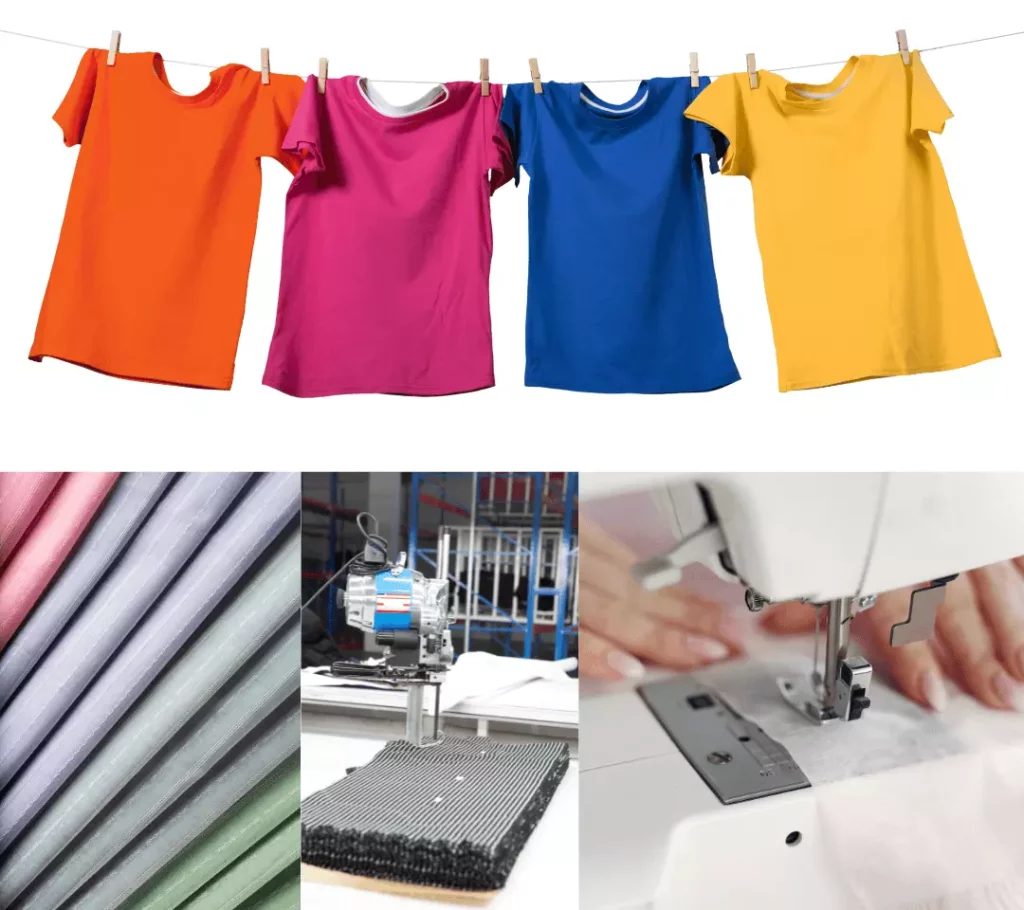T-shirts are one of the most comfortable, stylish, and versatile garments that they exist, of course; comfort depends on the materials with which they are made. There are people who will wonder how these are made since many of us use them, but we do not know anything about the mass production process. In this article, we will be talking about the t-shirt manufacturing process.
How t-shirts are made
Today, as we mentioned before, we will talk about the production process of making t-shirts, by this way you will know what the steps that your t-shirt had to go through.

History of Clothing
It all started a long time ago, we will briefly go back to the beginnings of primitive man. Due to the low temperatures, they need to be protected, which is why they used the skins of the animals to cover their body and stay warm. Over the years, the prehistoric people began to intertwine long grasses such as wicker, for the manufacture of baskets and mats. It was in this way that by joining and twisting a set of fibers, they could obtain a thread and with this, manufacture clothing.
With this fact, the manufacturing techniques were perfected with the passing of time until reaching what it is today. which has allowed the manufacture of garments on a massive level obviously, t-shirt trends change, and more and more we find curious aspects that involve the garments and the way we dress.
The shirts are worn by anyone of any size, from children to seniors. Adult sizes are generally small, medium, large, and extra-large, while toddler sizes are determined by month and weight. Additionally, to compensate for children’s larger heads in relation to their bodies, shirts are specially designed with shoulder vents that can be fastened with buttons or snaps.
T-shirts come in a range of hues, designs, and necklines, including the traditional crew and V-neck. T-shirt sleeves can be capped, long, raglan, or short. Trim with ornamental elements and pockets are further features.
Raw Materials & Machine Required
Most shirts are created from a blend of cotton and polyester or from 100% cotton. Organic cotton and natural colors may be used by environmentally-minded manufacturers. Four Thread Over Lock, Single Needle Lock Stitch, and Flat lock machines are used for making t-shirts.
Production Process of T-shirt
There are two ways that take part in the production process of making t-shirts. Both ways of making t-shirts are very similar.
Traditional Production: If what you want is to make a t-shirt at home, you need: fabric, tape measure, a pencil and be clear about the design. The pertinent measurements of the person are made according to the measurement techniques that must be carried out and the measurements are noted.
You should choose a good quality fabric, preferably cotton, that is a bit stretchy, then find the right design, apply the measurements and draw them with a pencil so you know where to cut the fabric, then sew it with a machine.
Industrial Production of T-shirts: The industrial production of t-shirts is a bit more complex since a lot of importance is given to processes that many of us are not aware of.
Steps of Making a T-shirt
The following steps involve with t-shirt manufacturing process:
Choose Fabric
On the market today there are many different types of fabrics, from cheap to expensive and the quality also corresponds to the price. The key factor to the durability of a T-shirt is the fabric. So choosing the right fabric will help to produce a quality product.
Some of the popular fabrics that are chosen by many customers today are crocodile fabric, shark fabric, cotton fabric, cotton blend fabric, etc. Which, cotton fabric is considered the most durable and beautiful.
Pattern Making
Once the appropriate fabric has been selected, the manufacturer will develop a pattern by machine or hand-emboss it directly to have a sample shirt image for the customer.
Spread the fabric
The next step is to spread the fabric to check if the fabric has any errors or not. Is it enough to make samples for customers?
The roll of fabric will be spread flat on the cutting table. When sewing to size in large quantities, manufacturers often overlap fabric layers to save maximum cutting time.
Cutting Fabric
On the basis of previously developed patterns, the industrial cutter cuts the fabric in parts. To minimize fabric wastage a marker is used to arrange all the pattern pieces over the area of the fabric to be cut.
When the cutting is done, the manufacturer will proceed to size the shirt and remove the excess fabric to move to the next stage.
Printing/Embroider
After cutting parts of the shirt, print or embroider the pattern on the shirt if required. Printing and embroidery are quick with the help of industrial machines and pre-molds. After the print is finished, the fabric will be pressed to increase the durability of the print.
Sewing the Cut Fabric
Next, the fabric sections are passed through the sewing unit to assemble the parts together.
Cut Excess Thread
After finishing the sewing, the shirt is transferred to the buttoning department and excess thread trimming. During the sewing process, the shirt may be crumpled and wrinkled. At this time, the worker is responsible for ironing the shirt to make it smooth and beautiful.
Quality Check
The QC department will re-check the entire finished product to see if the stitch line is beautiful or not. Is the road only redundant, is there something wrong? If there are errors, the damage will immediately make additional records to ensure the quality of the product.
Ironing & Packing
If the shirt has ensured the desired quality, then this will pack and label for shipping to the customer.
Check the quantity
Then proceed to check the number of goods as required, and record the shirt size and color to make the delivery note. Conduct an inventory of the number of t-shirts. Check the number of shirts and write them on the delivery note
Delivery
Finally, it is delivered to the shipping unit to deliver the goods to the customer.
If you’re looking for a personalized option, custom made t shirts provide the flexibility to choose the fabric, design, and fit, ensuring a high-quality garment that matches your specific style and comfort preferences while going through the same meticulous manufacturing process.

